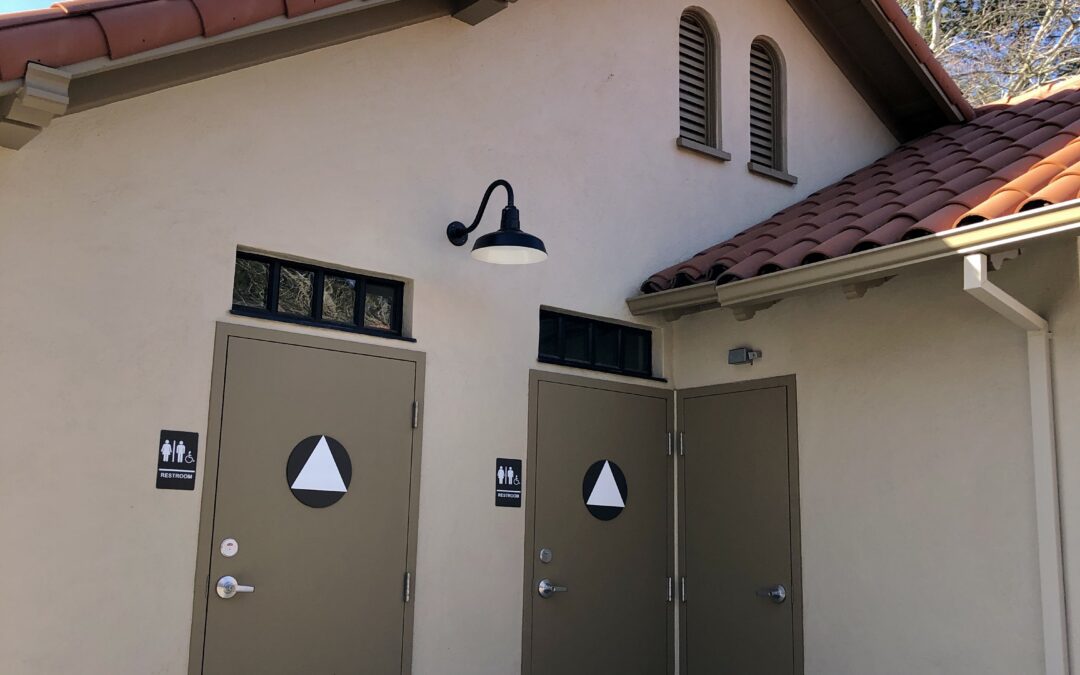
The public restroom at 87 Throckmorton Avenue.
Bloomberg reported at length last week under the headline, “Where Did All the Public Bathrooms Go?” that U.S. cities “have been closing or neglecting public restrooms for decades, leaving millions with no place to go. Here’s how a lack of toilets became an American affliction.”
It’s an excellent piece about how restrooms, or the increasing lack thereof, create systemic inequity, with a dire lack of public restrooms and spaces like grocery stores and restaurants less available due to the widespread coronavirus shutdowns over the past 20 months.
It got us thinking: while it took seemingly forever and came at an exorbitant cost, the debut of a pair of public, ADA-accessible bathrooms in the Depot building in January 2021 was a monumental step forward for our community.
The new loo, along with the public restroom at City Hall and those at various public parks around town, both provide residents and guests a place to go and, ahem, relieves the burden a bit on cafes, restaurants and stores.
The Depot public loo dates back to 1984, when then-Mill Valley Mayor Richard “Dick” Jessup, who designed the Depot Plaza, first sketched out a downtown public bathroom location there. Over the following 37 years, loo seekers had limited options, including an oft-awkward lineup that snaked through the Depot’s dining area. No more!
In 2018, the City Council approved Depot Bookstore & Cafe owner Paul Lazzareschi’s planned renovation of the city-owned building and included the bathroom project within it. Through fits and starts, Covid-induced and otherwise, Lazzareschi and his team steered the building renovation and bathroom construction forward.
While public bathrooms aren’t the sexiest way to advertise Mill Valley, it states unequivocally that we are a welcoming community to all, particularly at a moment when few genuinely public bathrooms remain in American cities, according to the report. “The state of public restrooms in the U.S. is pretty deplorable, with certain exceptions,” says Steven Soifer, president and co-founder of the American Restroom Association. “This is a public health concern, especially with Covid. It’s been a mess.”
According to a “Public Toilet Index” released in August 2021 by the U.K. bathroom supply company QS Supplies and the online toilet-finding tool PeePlace, the U.S. has only eight toilets per 100,000 people overall — tied with Botswana. From women to people of color to those with disabilities, vulnerable communities have struggled to have this most fundamental of needs accommodated, according to Laura Norén, a postdoctoral associate at New York University and co-editor of Toilet: The Public Restroom and the Politics of Sharing.
“If you don’t have public bathrooms, what you’re saying is, ‘We do not care about anyone who doesn’t have money,’” Peter Baldwin, a professor of history at the University of Connecticut who has studied the emergence of public restrooms in the U.S. told Bloomberg.


Hey! I know this is off topic, but do you happen to know where I can find a captcha plugin for my comment form? I am using the same blog platform.